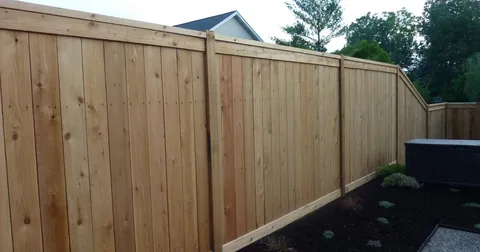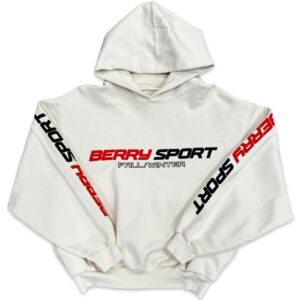Custom wood fencing is a versatile and effective way to define your property in Bear, DE, by providing privacy, security, and a natural aesthetic that blends seamlessly with outdoor spaces. It is a solution that offers both functional benefits and the flexibility to reflect personal style through various designs, wood types, and finishes. When selecting custom wood fencing, the key considerations include the purpose of the fence, the wood species, local climate impacts, installation quality, and maintenance requirements. These factors work together to create a fence that not only defines your space but also stands the test of time.
This article offers a detailed exploration of custom wood fencing options, technical specifications, and practical guidance. It is designed to help homeowners and property managers understand the nuances behind wood fencing choices, enabling informed decisions tailored to Bear’s, DE specific environmental conditions and local regulations.
Types of Custom Wood Fencing and Their Roles
Wood fencing comes in several distinct styles, each suited to different property needs and visual preferences. Choosing the appropriate type of wood fence depends largely on what you want the fence to accomplish—whether that’s privacy, decoration, or simple boundary marking.
- Stockade fences are a popular choice for those seeking maximum privacy and security. They feature tightly spaced vertical boards, often with pointed tops, forming a solid barrier that blocks sight and sound effectively. This type of fence is ideal for backyards or spaces where creating a private sanctuary is the priority.
- Picket fences are traditionally used for decorative purposes. Their evenly spaced boards allow visibility and airflow, making them suitable for front yards or gardens where aesthetic appeal is key but privacy is less of a concern. They evoke a classic, welcoming look, which adds charm without overwhelming the landscape.
- Shadowbox fences offer a compromise between the two, using alternating boards on each side of the rails. This design allows some airflow and partial visibility while still providing a sense of enclosure. It’s often chosen by homeowners who want privacy but don’t want to completely block out their surroundings.
- For properties with a rustic or natural aesthetic, split rail fences provide a boundary marker without obstructing views. These fences use horizontal rails and are open in design, serving primarily as property delineators rather than privacy barriers.
- Finally, fences with lattice tops add a decorative flair to otherwise solid fences, introducing texture and a visually lighter element on top of privacy panels. This style can soften the appearance of a tall fence and allow climbing plants to grow.
| Fence Type | Purpose | Visual Impact | Maintenance Level |
|---|---|---|---|
| Stockade | Maximum privacy/security | Solid and imposing | Moderate |
| Picket | Decorative, boundary | Light and inviting | Low to moderate |
| Shadowbox | Partial privacy | Textured and dynamic | Moderate |
| Split Rail | Boundary marking | Open, rustic | Low |
| Lattice Top | Decorative plus privacy | Adds charm and texture | Moderate |
Wood Types and Their Impact on Fence Longevity and Appearance
Selecting the right wood is critical for ensuring your fence endures Bear, DE’s humid subtropical climate. The wood species affects durability, resistance to rot and insects, visual appeal, and maintenance needs.
Cedar is one of the most common and reliable choices for wood fencing in Bear. It naturally resists rot and insect damage due to its oils and dense grain. Cedar’s warm reddish-brown color also weathers gracefully, making it aesthetically appealing. Though it costs more than pine, its natural durability reduces long-term upkeep.
Pine is more affordable but less naturally resistant to decay. Most pine used in fencing is pressure-treated with chemicals that protect against moisture and pests. Pressure-treated pine offers good durability but requires consistent maintenance, such as sealing and staining, to prolong its life.
Redwood is a premium option known for its strength and deep red hues. It has excellent natural resistance to rot and insects and requires minimal maintenance if properly sealed. However, its high cost puts it out of reach for many homeowners.
A technical comparison of common wood types illustrates the trade-offs:
| Wood Type | Natural Durability | Cost | Appearance | Maintenance Frequency |
|---|---|---|---|---|
| Cedar | High | Moderate-High | Reddish-brown, fine grain | Every 2-3 years staining/sealing |
| Pressure-treated Pine | Moderate-High | Low-Moderate | Light color, greenish tint | Annual inspection, sealing |
| Redwood | Very High | High | Deep red, rich texture | Minimal with sealing |
The humid climate in Bear means moisture and fungal growth can damage wood quickly if left unprotected. Regardless of the wood type, regular maintenance is essential to preserve fence integrity.
Installation Considerations for Maximum Durability
A well-installed wood fence can outlast one that is cheaply built, no matter the wood type. In Bear, DE, where humidity and seasonal weather swings affect materials, installation quality plays a crucial role.
Fence posts should be set deep enough (typically 24 to 36 inches) to withstand shifting soils and high winds. Posts should ideally be pressure-treated or cedar to resist rot from ground contact. Using concrete footings or metal post anchors can further reduce moisture damage at the base.
Boards must be attached with galvanized nails or screws to prevent rust and ensure long-term strength. Proper spacing between boards, especially in designs that allow airflow like shadowbox fences, helps prevent moisture buildup that causes warping and decay.
The finish applied after installation, whether stain, paint, or sealant, should be breathable yet water-repellent to allow wood to expand and contract without cracking.
| Installation Feature | Recommended Standard |
|---|---|
| Post Depth | 24-36 inches |
| Post Material | Pressure-treated pine or cedar |
| Fasteners | Galvanized nails or screws |
| Board Thickness | 0.75 – 1 inch |
| Spacing Between Boards | 0 – 1 inch depending on design |
| Finish | Water-repellent stain or paint |
Market Insights and Environmental Factors
Wood fences remain the most popular fencing material in residential markets, accounting for over 40% of installations nationwide. In humid regions like Bear, DE, choosing woods with natural decay resistance, such as cedar or pressure-treated pine, improves longevity by up to 25% compared to untreated species.
Humidity and temperature swings in Bear accelerate wood expansion and contraction, contributing to warping or cracking if the wood is not properly treated. Termite presence in the region also makes wood selection and preventative treatments essential.
These environmental factors emphasize the importance of selecting the right wood, applying quality finishes, and ensuring professional installation to protect your investment.
Things to Consider Before Choosing Custom Wood Fencing
Before investing in a custom wood fence, evaluate these key factors carefully:
- Primary Function: What is your main goal—privacy, security, decoration, or boundary definition? This influences design and height.
- Budget vs. Longevity: Higher-grade woods like cedar or redwood cost more initially but often require less maintenance and last longer than cheaper pine.
- Local Regulations: Check Bear’s zoning laws for maximum fence height, setbacks, and material restrictions. Compliance avoids costly adjustments later.
- Maintenance Commitment: Wood fencing demands periodic upkeep, including cleaning, sealing, and repairing damage. Be prepared for this ongoing effort.
- Environmental Exposure: Consider the orientation of your fence to sun, wind, and moisture, and select finishes that protect from these elements.
Common Questions About Custom Wood Fencing
How long will a wood fence last in Bear’s climate?
Typically, a well-built and maintained wood fence lasts between 15 and 25 years. Cedar and pressure-treated pine offer the best performance in Bear’s humid environment.
Can I install a custom wood fence myself?
DIY installation is possible, but proper post setting, material handling, and finishing require skill. Professional installation ensures durability and code compliance.
How often should I maintain my wood fence?
Inspect the fence annually for damage, clean it regularly, and reseal or restain every 2 to 3 years to extend lifespan.
What are the best finishes for wood fences?
Water-repellent stains that allow the wood to breathe are preferred over paint, which may peel in humid conditions.
Bonus Tips to Extend Wood Fence Life
- Use post caps to prevent water from pooling on top of fence posts, which accelerates rot.
- Maintain a clearance of a few inches between the bottom of the fence and the soil to prevent moisture wicking.
- Trim plants and vines near the fence regularly to prevent mold and insect infestations.
Conclusion
Custom wood fencing in Bear, DE, is an effective way to define your property boundaries while enhancing privacy and curb appeal. Success depends on selecting the right wood species for durability, choosing a design that fits your property’s purpose, and ensuring high-quality installation adapted to local climate conditions. Maintenance is essential to preserve the fence’s appearance and structural integrity over time. Homeowners should carefully assess their specific needs and environmental factors to choose a fence that offers long-term value and enjoyment.
Ready to Define Your Space with Custom Wood Fencing?
Use the insights provided here to make an informed decision about your next fencing project. Understanding wood types, designs, installation techniques, and maintenance will help you create a fence tailored to your property and lifestyle.
For expert advice or assistance with installation and maintenance, contact:
JPM Home Services Phone: (302) 598-6297 Email: [email protected]
FAQ
What is the best wood for humid climates? Cedar and pressure-treated pine perform best in humid areas due to their natural or chemical resistance to rot and insects.
How high can I build my fence in Bear, DE? Local codes generally limit fences to 6 feet in rear yards and 4 feet in front yards; confirm specifics with local authorities.
Is staining or painting better for wood fences? Staining is preferred because it allows the wood to breathe and is less prone to peeling in humid conditions.
How often should wood fences be resealed? Every 2-3 years, depending on exposure and wood type.
Can I customize fence designs? Yes, custom wood fencing offers various design options to match your privacy, aesthetic, and security needs
Reviewer: Chloe Martinez brings 8 years of experience in home improvement. Feedback from Chloe helped shape this post to better support companies working to strengthen their reputation and expand their reach.
For more: https://theguestblogs.com/expert-deck-building-services-for-homes-and-businesses-in-brookside-de/





